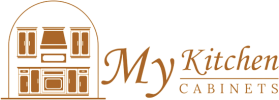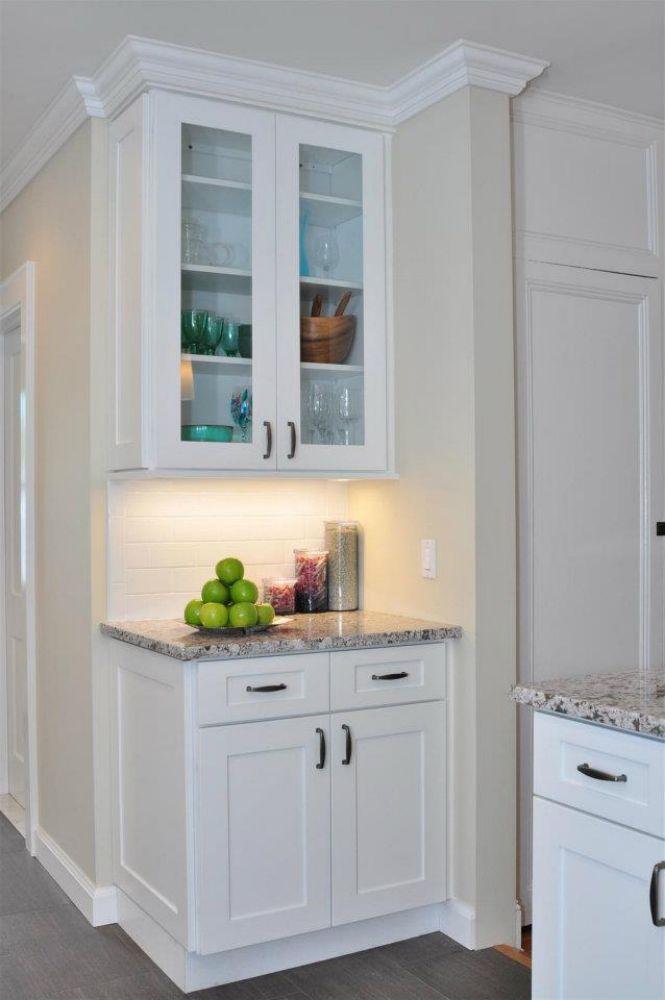Planning Ahead When Ordering Kitchen Cabinets
Ordering kitchen cabinets is one of the most exciting and detailed parts of any kitchen remodel or renovation project. While it’s easy to focus on the cabinet design, color, and finish, many homeowners overlook the importance of including all the necessary accessories and components that make the kitchen fully functional and efficient.
Missing key accessories—such as drawer inserts, handles, filler panels, or moldings—can delay installation, increase costs, and create frustration during your project. That’s why proper planning, detailed review, and working with a trusted supplier like My Kitchen Cabinets can make all the difference. With expert guidance, you can ensure your kitchen cabinets order includes every component, fitting, and accessory needed for a complete, seamless kitchen setup.
This comprehensive guide explains how to prepare for your cabinet order, what accessories are essential, and how to confirm that everything is included before installation begins.
Why Accessories Are Crucial in Kitchen Cabinet Design
1. Functionality Beyond Storage
Cabinet accessories turn basic storage into a smart, organized kitchen. Pull-out shelves, spice racks, and dividers help maximize space and improve convenience. Without them, even the best cabinets can feel incomplete.
2. Aesthetic Finishing Touches
Accessories like crown moldings, toe kicks, and end panels enhance the cabinet’s visual appearance. They provide a polished, custom look that ties the entire kitchen together.
3. Installation Efficiency
Having all parts in one shipment prevents delays during assembly and installation. Missing brackets, filler pieces, or hinges can halt progress and require additional orders.
4. Cost and Time Savings
Ordering accessories upfront reduces extra shipping costs and ensures you don’t have to wait weeks for missing components. It’s always more cost-effective to purchase everything together.
Step One: Assess Your Kitchen Layout and Needs
1. Review Your Floor Plan Carefully
Begin with a precise kitchen layout that includes dimensions for walls, windows, appliances, and plumbing fixtures. The layout determines cabinet sizes and the accessories that fit properly—such as fillers, panels, or corner units.
2. Consider Function Zones
Think of your kitchen in zones: preparation, cooking, cleaning, and storage. Each area benefits from specific accessories. For instance, drawers with utensil inserts in the prep zone and pull-out trash bins in the cleaning zone.
3. Account for Traffic Flow
A good layout ensures smooth movement between counters, islands, and cabinets. Proper planning helps prevent accessories like pull-out drawers from obstructing walkways or other cabinet doors.
Step Two: Make a Detailed Kitchen Cabinet Checklist
Creating a complete checklist helps you confirm that all parts are included before you finalize your order. Here’s what every checklist should contain:
1. Cabinet Boxes and Frames
Ensure your order includes all wall, base, and tall cabinets required for your kitchen layout.
2. Doors and Drawers
Double-check that every door and drawer front matches the design, finish, and size specifications.
3. Hardware and Hinges
List all handles, knobs, pulls, hinges, and soft-close mechanisms needed. Many manufacturers allow you to upgrade to premium options.
4. Trim and Decorative Molding
Include crown molding, light rail molding, and toe kicks to achieve a polished look and hide seams or gaps.
5. Fillers and Panels
Fillers bridge small gaps between cabinets and walls or appliances, while end panels finish exposed sides. Both are essential for professional results.
6. Shelves and Drawer Inserts
Include adjustable shelves, drawer dividers, cutlery trays, and spice racks based on your storage needs.
7. Mounting and Assembly Components
Ensure that brackets, screws, corner blocks, and any other installation hardware are included in your shipment.
Step Three: Understand the Types of Cabinet Accessories
Accessories are not just add-ons—they’re integral to a well-functioning kitchen. Let’s explore the most common and useful ones to include in your kitchen cabinets order.
1. Organizational Accessories
Pull-Out Shelves
These allow easy access to items stored in the back of base cabinets—perfect for pots, pans, and dry goods.
Spice and Utensil Racks
Install them inside doors or drawers to keep ingredients and tools neatly organized.
Lazy Susans and Corner Cabinets
Maximize corner storage space with rotating trays that provide full access to contents.
Drawer Inserts and Dividers
Keep utensils, silverware, and small kitchen items organized. Options include wood, metal, or plastic inserts.
Trash and Recycling Pull-Outs
Integrate pull-out bins that keep waste hidden and easily accessible.
2. Decorative Accessories
Crown Molding
Installed at the top of wall cabinets, crown molding gives your kitchen a high-end, finished look.
Light Rail Molding
Used beneath upper cabinets, light rail molding conceals under-cabinet lighting and adds elegance.
Baseboard Trim and Toe Kicks
These accessories cover gaps between cabinets and floors, protecting against dust while providing a cohesive look.
End Panels and Skins
End panels finish exposed cabinet sides, while skin panels hide rough or unfinished edges.
3. Functional and Hardware Accessories
Handles and Knobs
Select finishes (chrome, matte black, brass, or nickel) that complement your kitchen style.
Soft-Close Hinges and Drawer Slides
A must-have upgrade that prevents slamming, extends the life of your cabinetry, and adds quiet convenience.
Lift-Up or Pull-Down Mechanisms
For upper cabinets, these mechanisms improve accessibility and ergonomics.
Under-Cabinet Lighting Fixtures
Ensure wiring and lighting kits are compatible with your cabinet design.
Step Four: Work with a Reliable Supplier
Choosing a trusted cabinet supplier ensures your order is accurate and complete. At My Kitchen Cabinets, our experts walk you through each phase of the order process—from design consultation to final review—to ensure that no accessory is forgotten.
1. Professional Consultation
Work with specialists who can evaluate your kitchen layout and recommend accessories based on your cooking habits and storage needs.
2. 3D Design and Visualization
Visual layouts help you confirm that every cabinet and accessory fits perfectly within the space.
3. Order Review Checklist
Before finalizing, you’ll receive a detailed order summary that includes every cabinet, accessory, and hardware component for verification.
4. Quality Assurance and Packaging
Reliable suppliers ensure that accessories are packaged correctly and labeled clearly to match installation order, minimizing confusion on-site.
Step Five: Double-Check Order Specifications
Even when working with professionals, you should always review your order personally before it’s shipped.
1. Match Part Numbers and Quantities
Compare your list with the order sheet. Make sure part numbers, finishes, and quantities match your needs.
2. Confirm Accessory Compatibility
Certain accessories—like pull-out racks or corner inserts—are only compatible with specific cabinet types or widths.
3. Review Measurements Carefully
Measure twice to ensure fillers, panels, and trim pieces fit perfectly within your kitchen layout.
4. Account for Delivery Lead Times
Accessories may have different lead times. Verify that all items will ship together to avoid installation delays.
Step Six: Prepare for Installation
Having all accessories on hand before installation ensures the process runs smoothly.
1. Organize Components Before Assembly
Lay out all accessories and hardware in an organized space. Label each item according to its location in the kitchen.
2. Verify Completeness Upon Delivery
Check your shipment immediately. Use your checklist to confirm all items—especially smaller pieces like handles, hinges, and brackets—are present.
3. Communicate with Installers
Provide your installer with the full accessory list to ensure everything is installed in the correct position.
4. Save Extra Parts
Keep spare hardware or small components in labeled bags for future repairs or replacements.
Common Accessories Homeowners Forget to Include
Even the most prepared buyers sometimes forget small but essential components. Here are the most commonly overlooked items:
-
Filler strips for tight spaces between appliances.
-
Toe kicks to cover gaps beneath base cabinets.
-
Light rails for under-cabinet lighting.
-
Back panels or skins for islands or peninsula backs.
-
Crown molding and trim for upper cabinet edges.
-
End panels for exposed sides.
-
Soft-close hinges for quiet drawer and door operation.
Adding these from the start ensures your kitchen looks polished and functions flawlessly.
Mistakes to Avoid When Ordering Kitchen Cabinets
1. Failing to Include All Accessories in the Initial Budget
Accessories may seem minor but can add up. Allocate part of your budget to functional and decorative add-ons early in the planning process.
2. Overlooking Electrical or Plumbing Considerations
If you plan to include lighting or built-in appliances, ensure your cabinet order accounts for space and wiring needs.
3. Not Verifying Color and Finish Samples
Always compare actual samples to your kitchen lighting before confirming color choices. Finishes can appear different under artificial versus natural light.
4. Forgetting About Future Maintenance
Select durable, easy-to-clean finishes and sturdy hardware to reduce maintenance issues over time.
Best Practices for a Complete Cabinet Order
-
Use Professional Design Software: Work with your supplier to visualize your entire kitchen before ordering.
-
Keep a Copy of Your Final Order Sheet: This ensures you can verify deliveries and replacements easily.
-
Request Assembly Instructions and Accessory Guides: Clear instructions reduce confusion during installation.
-
Label Every Cabinet and Accessory: This helps your installer place components in the correct locations.
-
Order Extras When Possible: Having a few extra handles, hinges, or panels ensures you’re covered for future updates.
The Benefits of a Complete and Accurate Cabinet Order
1. Streamlined Installation
When every component is included and pre-verified, installation proceeds quickly without unexpected setbacks.
2. Cost Efficiency
Purchasing everything together reduces shipping costs and minimizes wasted materials.
3. Design Cohesion
Including all matching accessories ensures that your kitchen maintains a unified, professional appearance.
4. Increased Property Value
A well-designed, fully accessorized kitchen appeals to buyers and renters alike, adding long-term value to your home.
Conclusion
Ordering kitchen cabinets is more than just choosing colors and styles—it’s about ensuring every accessory, hinge, molding, and panel fits together to create a complete, functional, and beautiful kitchen. Missing even a small part can delay installation and impact your design’s overall look and performance.
By working with professionals like My Kitchen Cabinets, you can confidently manage every detail of your order. From layout planning and accessory selection to verification and delivery, our experts help you ensure that nothing is overlooked.
A complete cabinet order means fewer delays, smoother installation, and a kitchen that performs as beautifully as it looks. Invest the time in planning, check every component twice, and choose a trusted partner that values precision as much as you do.
FAQs
1. What accessories are essential when ordering kitchen cabinets?
Essential accessories include hardware (handles, knobs, and hinges), fillers, moldings, toe kicks, drawer inserts, pull-out shelves, and end panels. Each plays a role in ensuring your kitchen looks complete and functions efficiently.
2. How can I avoid missing parts in my cabinet order?
Always create a detailed checklist before placing your order and cross-reference it with your supplier’s invoice. Working with professionals who provide 3D designs and itemized orders, like My Kitchen Cabinets, helps avoid missing components.
3. Should I order accessories separately or with the main cabinets?
Order them together whenever possible. Buying all parts in one order ensures color and finish consistency while preventing shipping delays.
4. What are the most commonly forgotten accessories?
Homeowners often forget fillers, toe kicks, crown moldings, light rails, and end panels. These finishing pieces are essential for a polished look.
5. Can I add accessories later if I miss something?
Yes, but it’s more efficient and cost-effective to order everything upfront. Adding items later can result in mismatched finishes and extended delivery times.
Read: What should I consider when buying shaker-style kitchen cabinets?
Read: Are painted kitchen cabinets more likely to show wear than stained ones?

